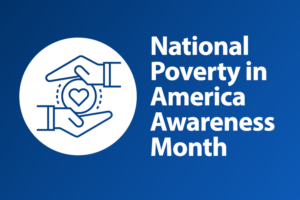Sarah Ford | October 30, 2013
Nonprofits Must Respond Swiftly to Critical News Stories
By Tim Delaney, Chief Executive of the National Council of Nonprofits
For the second time in recent months, a major newspaper has overreached to give all nonprofits a black eye by publishing an article essentially questioning the integrity of nonprofits that have been victimized by fraud or unfortunate circumstances.
On Sunday, the Washington Post’s Web site promised to take readers “inside the hidden world of thefts, scams, and phantom purchases at the nation’s nonprofits.” That came after the Center for Investigative Reporting and the Tampa Bay Times this summer declared “America’s 50 worst charities rake in nearly $1-billion for corporate fundraisers.”
Both stories show that nonprofits were victims of fraud and unethical acts by individuals, but the stories slanted the presentation to make it sound as if nonprofits were the perpetrators. Indeed, most of the organizations mentioned in the 50 worst charities series are extreme outliers, apparently set up primarily to funnel money to professional fundraisers while using names meant to evoke more established legitimate charitable organizations.
In The Washington Post story, the reporters had access to more than a million tax forms nonprofits filed over four years. They found that 1,000 nonprofits checked yes in response to a question on those returns about whether their group had suffered a “diversion of assets.”
Using that tiny percentage, the article then gave the misimpression that the nonprofit world is rife with “financial skullduggery,” when in fact it was the approximately 1,000 nonprofits themselves that were the victims of scams by for-profit vendors, employee theft, and outside investment advisers.
No matter how much we dislike the ill-informed and negative slant of pieces that appear in the press, it’s important to recognize what the public is saying about them. In both cases, people are making comments on the online stories saying they will never donate to a charity again.
Thus, we cannot sit on the sidelines silently when false or misleading statements are made about our integrity and the work we do helping people and solving problems in our local communities.
Here are four ideas every nonprofit should try to advance as they seek to educate the local and national press about how we really work:
• Nonprofits are transparent. Nonprofits make disclosure and openness a badge of honor. The Forms 990 that were used for these and other articles are available to the public 24 hours a day, seven days a week. Most private companies don’t make nearly as much information available to the public. Many nonprofits prominently display their commitment to transparency on their Web sites by posting their federal filings for all to see.
• Fraud can happen to anyone—even law-enforcement officials. The Post played down two key facts about the main nonprofit cited in its investigation: the American Legacy Fund was established by state attorneys general as part of the settlement of the states’ lawsuit against tobacco companies, and state attorneys general (current and former) continue to occupy many seats on the fund’s board. If the attorneys general, who know what to look for, could not prevent fraud from happening or know to intervene while it was happening, that shows that it can happen anywhere to any organization, even those with knowledgeable leaders and the best of intentions. (Full disclosure: I was a senior official in a state attorney general’s office when the Legacy Fund was established.)
• Nonprofits’ work to prevent fraud and promote ethics is never done. All nonprofits must continue to be aggressive in promoting ethical conduct and financial transparency. The nonprofit community must earn the public’s trust every day not only by complying with the law but also by modeling and promoting integrity, transparency, and accountability.
• Overhead costs are essential to nonprofit operations. Putting administrative control systems in place to prevent fraud (through training and deterrence) costs money, yet too often grant makers say their money can be used to pay only for “programs” without recognizing or helping to defray administrative costs essential for program delivery. Similarly, many government contracts with nonprofits prevent reimbursement of such overhead costs.
As newspapers have cut back their staffs, fewer and fewer reporters possess a deep understanding of how nonprofits work. That’s why it is essential for nonprofits to make working with the news media a regular advocacy tool to advance and protect your nonprofit’s mission. Every misleading article is an attack that makes it harder to bring in resources needed to do good work.
So no matter what your organization’s mission, reach out to a local reporter today. Show him or her not just the impact your nonprofit is making in the community but also a shining example of good governance and transparency that is a hallmark of the nonprofit community.
Source: The Chronicle of Philanthropy
Get Resources and Insights Straight To Your Inbox
Explore More Articles
Open Position: Customer Service Coordinator (Remote-Part Time)
Position Title: Customer Service Coordinator (Remote – Part Time) Department: Charitable Funds Management Solutions We are a non-profit charitable organization looking for skilled individuals who…
Read ArticleGet Resources and Insights Straight To Your Inbox
Receive our monthly/bi-monthly newsletter filled with information about causes, nonprofit impact, and topics important for corporate social responsibility and employee engagement professionals, including disaster response, workplace giving, matching gifts, employee assistance funds, volunteering, scholarship award program management, grantmaking, and other philanthropic initiatives.




